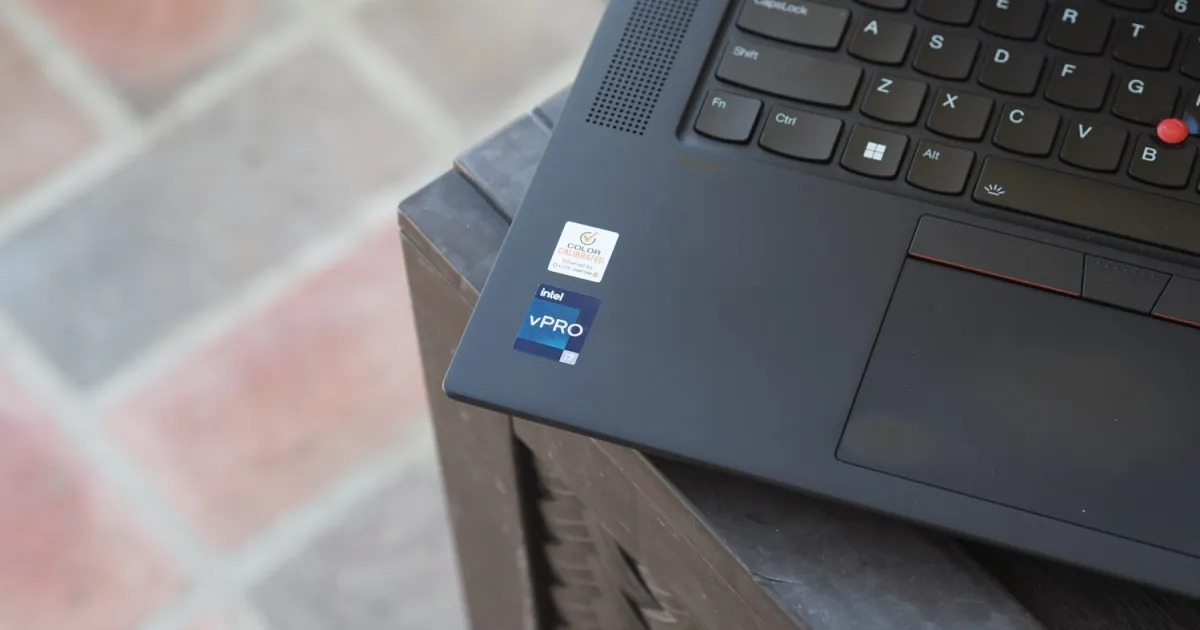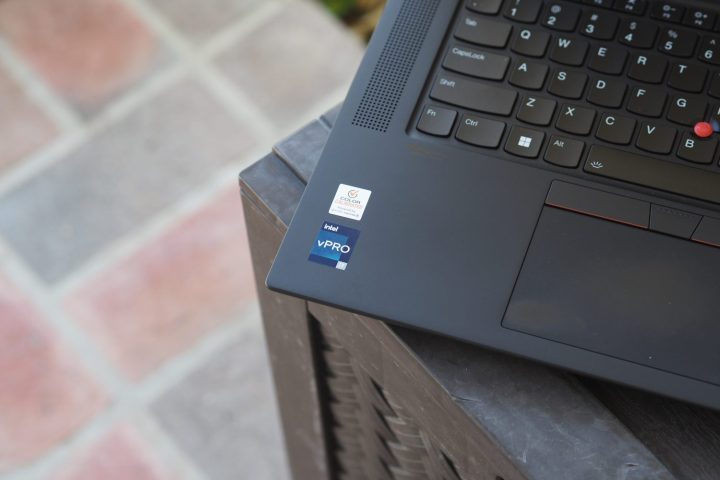CPU confusion made buying a laptop in 2022 a nightmare
Intel's 12th-gen CPUs are a motley and confusing collection of processors. It's not always clear which will perform better, so buyers need to beware.

There’s nothing wrong with creating stratification whereby products are designed and priced to meet specific user needs. Automakers are masters of it, with less expensive cars meeting basic needs and luxury cars for those with the means to enjoy the best automobile technology has to offer. In 2022, however, CPU manufacturers blew it, creating a confusing mess that made choosing a laptop more difficult than it should have been. And by “CPU manufacturers,” we primarily mean Intel.
Don’t misunderstand me: Intel’s 12th-gen product lines themselves make sense on paper. There are low-power chips to save energy and costs and high-power chips to maximize performance at a premium price. But when placed in actual laptops, the distinction was far less clear than it should have been.
It’s so complicated
 Mark Coppock/Digital Trends
Mark Coppock/Digital TrendsLet’s start with an overview of how the lineup was supposed to work. We’ll focus on two specifications here, although there are many more we could consider. First is the processor base power, or — very simply put — the amount of power that a CPU pulls during normal operation. Second is the number of cores and threads, which with Intel’s 12th generation follows a BIG.little configuration where there is a mix of Performance cores for demanding tasks and Efficient cores for lesser tasks that draw less power.
Also of note is that the higher the numerical designation within the same basis series, such as a Core i7-1255U versus a Core i7-1265U, the higher the Max Turbo Frequency and the top-end speed.
Intel has stratified the lineup into three basic levels, as outlined in the following table:
| Series | Minimum watts | Maximum watts | Minimum cores/threads | Maximum cores/threads |
| U-series | 9 watts | 15 watts | 6 cores (two Performance, four Efficient), 8 threads |
10 cores (two Performance, eight Efficient), 12 threads |
| P-series | 28 watts | 28 watts | 10 cores (two Performance, eight Efficient), 12 threads |
14 cores (six Performance, eight Efficient), 20 threads |
| H-series | 45 watts | 45 watts | 8 cores (four Performance, four Efficient), 12 threads |
14 cores (six Performance, eight Efficient), 20 threads |
| HX-series | 55 watts | 55 watts | 12 cores (four Performance, eight Efficient), 16 threads |
16 cores (eight Performance, eight Efficient), 24 threads |
For the most part, you’ll find U-series and P-series CPUs in the thinnest and lightest laptops and H-series CPUs in larger, heavier laptops intended for the fastest performance. The HX-series CPUs, of which we’ve only reviewed a single laptop, the MSI GT77 Titan, represent the absolute top-of-the-line in terms of processor speed and usually find their way into gaming laptops. And as far as we know, that’s exactly how the lineup is supposed to be utilized.
As I’ve reviewed many 12th-gen laptops, though, I’ve noticed that manufacturers have used a motley assortment of CPUs in different form factors. Most interesting has been the use of H-series CPUs in what would usually be considered thin and light ultrabooks. And when comparing performance between U-series and P-series laptops, the presumably lower-power CPUs have held their own.
In fact, maybe it’s unfair to ding Intel for how it designed its chips, and more accurate to say that manufacturers have used the chips in less efficient installations. But Intel does have to bear at least part of the blame for creating such a complicated assortment of CPUs.
And what were the results?
Consider the following table, which highlights how performance doesn’t always track the CPU’s specifications.
| Geekbench (single/multi) |
Handbrake (seconds) |
Cinebench R23 (single/multi) |
PCMark 10 Complete |
|
| Asus ZenBook S 13 Flip (Core i7-1260P) |
Bal: 1,602 / 8,559 Perf: 1,639 / 8,923 |
Bal: 132 Perf: 117 |
Bal: 1,583 / 7,595 Perf: 1,614 / 9,220 |
5,548 |
| Dell XPS 13 Plus (Core i7-1280P) |
Bal: 1,316 / 8,207 Perf: N/A |
Bal: 170 Perf: 94 |
Bal: 1,311 / 6,308 Perf: 1,650 / 7,530 |
4,309 |
| Lenovo Slim 9i (Core i7-1280P) |
Bal: 1,720 / 10,115 Perf: 1,726 / 11,074 |
Bal: 114 Perf: 95 |
Bal: 1,795 / 9,467 Perf: 1,824 / 11,301 |
5,442 |
| HP Dragonfly Folio G3 (Core i7-1265U) |
Bal: 1,443 / 7,450 Perf: 1,419 / 7,997 |
Bal: 155 Perf: 144 |
Bal: 1,307 / 5,728 Perf: 1,608 / 6,890 |
4,603 |
| HP Envy x360 13 2022 (Core i7-1250U) |
Bal: 1,435 / 7,285 Perf: 1,460 / 7,288 |
Bal: 136 Perf: 138 |
Bal: 1,504 / 7,436 Perf: 1,504 / 7,441 |
4,907 |
| HP Spectre x360 13.5 (Core i7-1255U) |
Bal: 1,566 / 7,314 Perf: 1,593 / 7921 |
Bal: 169 Perf: 120 |
Bal: 1,623 / 5,823 Perf: 1,691 / 7,832 |
5,203 |
| Surface Pro 9 (Core i7-1255U) |
Bal: 1170 / 6518 Perf: 1,598 / 8,165 |
Bal: 166 Perf: 127 |
Bal: 1124 / 7537 Perf: N/A |
4,045 |
| Lenovo IdeaPad Duet 5i (Core i3-1215U) |
Bal: 1,513 / 5,676 Perf: 1,515 / 5,970 |
Bal: 251 Perf: 181 |
Bal: 1,488 / 4,087 Perf: 1,582 / 4,842 |
4,578 |
| Lenovo ThinkBook Plus Gen 3 (Core i7-12700H) |
Bal: 1,647 / 9,397 Perf: 1,644 / 9,306 |
Bal: 98 Perf: 96 |
Bal: 1,708 / 10,592 Perf: 1,717 / 11,181 |
5,353 |
| Lenovo Slim 7i Pro X (Core i7-12700H) |
Bal: 1,670 / 11,971 Perf: 1,730 / 12,356 |
Bal: 90 Per: 79 |
Bal: 1,731 / 11,379 Perf: 1,791 / 13,276 |
6,322 |
| Acer Swift 3 OLED (Core i7-12700H) |
Bal: 1,698 / 10,972 Perf: 1,708 / 11,287 |
Bal: 90 Perf: 85 |
Bal: 1,676 / 10,764 Perf: 1,715 / 11,069 |
4,983 |
This is just a small assortment, but we can see that performance doesn’t always track the CPU. For example, the Asus Zenbook S 13 Flip performed better in the Geekbench 5 and Cinebench R23 tests than the Dell XPS 13 Plus with its faster CPU, although the Dell did better in the Handbrake test. The second-slowest slowest CPU on this list, the Core i7-1250U in the HP Envy x360 13, performed better in Handbrake and Cinebench R23 than the Core i7-1265U in the HP Dragonfly Folio G3.
And generally speaking, the U-series and P-series processors were within spitting distance of each other in performance. You need to jump to H-series CPUs to see significant performance improvements. Even then, a laptop like the Lenovo Slim 9i with a Core i7-1260P scored similarly to the H-series laptops in this comparison group. And when we look at the PCMark 10 Complete benchmark that looks at a variety of productivity, media, and creativity tasks, the results are all over the map.
I’d love to point out that battery life followed the power rating of each CPU, but there are too many variables to draw that conclusion. Laptops have different battery capacities, more or less power-hungry displays, and overall tuning, which are more influential in battery life than the CPU. But I can say this: I’ve seen no strong correlation that purchasing a laptop with a lower-power CPU automatically results in better battery life.
What’s it all mean?
If you want a thin and light laptop that provides solid productivity performance, then any U- or P-series CPU will do the job. Even the Lenovo IdeaPad Duet 5i, the “slowest” laptop we’ve tested with the 15-watt, 6-core/8-thread Core i3-1215U, performed well enough.
My advice is to read reviews and base your decision on the build quality, overall configuration, keyboard and touchpad, display, and battery life and leave the CPU decision alone. Certainly, unless you’re opting for an H-series machine (and maybe not even then), don’t buy the most expensive CPU option just because you think it will give you significantly better performance.
This was Intel’s first attempt at the BIG.little hybrid CPU architecture, and maybe it’ll do better with its 13th-gen CPUs. Or, manufacturers will better differentiate their models and put the right CPUs in the right form factors. That remains to be seen. But for now, the CPU situation remains confusing and guarantees little in terms of performance.

 ShanonG
ShanonG 






























